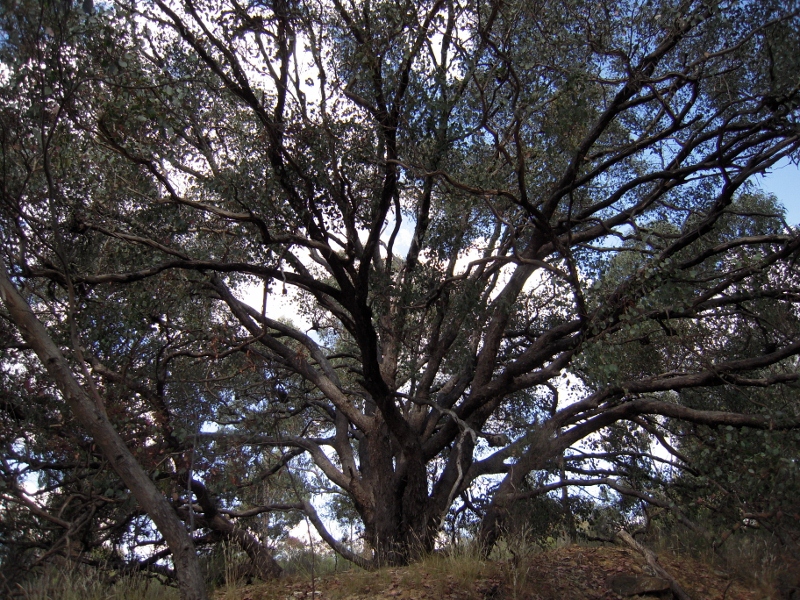The red box tree pictured below, on the east side of the Great Dividing Trail as it passes through the Spring Gully Mine site, is interesting for a couple of reasons. One is that it’s sprung up out of the middle of an apparently barren pile of mining mullock. The other is that it carries the remains of at least twenty Mistletoe plants.These aren’t easy to see from the photo, but it’s a quite remarkable experience to stand under this tree and see that it’s played host to, and seen off, such a number of parasitic [or, to be more accurate, epiphitic] plants.

Red box, Spring Gully: this tree is a living refutation of the idea that mistletoe infestation is necessarily deadly to the host tree.
A few years ago FOBIF and local field naturalists had to fend off a move by a local councillor to get mistletoe removed from eucalypts in Campbell’s Creek and along the highway at Wesley Hill. The logic was that the trees were being killed by the parasite. Our reasoning was that the mistletoe infestations were not the main cause of tree distress, and that in any case mistletoe has an important role to play in bushland ecology. For a good account of this role, have a look at a recent post on the Natural Newstead site.
The idea of attacking the mistletoe died quietly, and the trees in question continue to flourish, despite carrying healthy mistletoe populations. Although unhealthy trees may be at risk from mistletoe, in reasonable conditions they are perfectly capable of carrying the plant without obvious problem. A feature of the bush at the moment is the dramatic colour contrast of olive green mistletoe plants against the grey green of eucalypt foliage.
Now new research has underlined the importance of mistletoe to bushland biodiversity. The research, by ecologists at Charles Sturt University, dispenses with a few myths about mistletoe’s supposed deadliness, but also has some surprising revelations: it concludes, for example, that mistletoe is vitally important for the survival of up to a third of our woodland birds. [A photo from our gallery of the wonderful mistletoe bird can be seen here].




 Click on image for info/order page
Click on image for info/order page Click on image for info/order page
Click on image for info/order page Click on image for info/order page
Click on image for info/order page




















